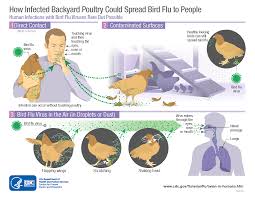
In the begining of 2025, the avian influenza virus, commonly known as bird flu, has exhibited concerning developments, particularly with the emergence of the H5N9 strain in the United States. This marks the first detection of H5N9 on U.S. soil, identified at a duck farm in Merced County, California. The U.S. Department of Agriculture has initiated comprehensive investigations and heightened surveillance in response to this outbreak.
Concurrently, the H5N1 strain continues to spread, affecting a wide range of species, including wild birds, poultry, and mammals. Notably, the virus has been detected in dairy cattle across multiple states, a development that raises significant concerns due to the unprecedented nature of such cross-species transmission.
Human cases of H5N1 have also been reported. In the United Kingdom, a person in central England contracted the virus through close contact with infected birds on a farm. Authorities have assessed the risk to the broader public as very low but are monitoring the situation closely.
In the United States, the Centers for Disease Control and Prevention (CDC) has confirmed 66 human cases of H5N1 since early 2024, primarily among farm workers exposed to infected cattle or poultry. Tragically, the first U.S. death associated with H5N1 was reported in Louisiana in January 2025.
The rapid spread of H5N1 is being described as the fastest and largest outbreak ever, posing a significant threat to biodiversity worldwide. The virus has infected more than 500 species, including 485 avian and at least 70 mammalian species. This unprecedented progression includes the first-ever U.S. cases of infections in dairy cattle and heightened pandemic risks.
Health experts are urging enhanced measures to control the outbreak and mitigate the risk of the virus evolving to spread between humans. Recommendations include increased vaccination of farm workers and efforts to limit the spread among farm animals. The CDC is closely monitoring the situation and has provided flu vaccines to farm workers in 12 states.
Despite these concerns, the CDC maintains that the risk to the general public remains low. However, the situation is evolving, and public health authorities are vigilant in monitoring and responding to new developments.
Recent development in Avian Influenza:
https://www.ama-assn.org/delivering-care/public-health/new-bird-flu-outbreak-california-hmpv-and-covid-why-everyone-sick
https://www.nytimes.com/2025/01/27/health/bird-flu-h5n1.html
https://www.nature.com/articles/d41586-025-00245-6
https://youtu.be/5tnYJ3CHk_s?si=iEyKEpCst7R4SVby